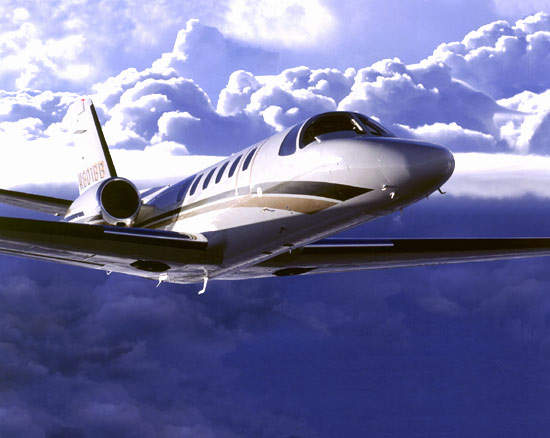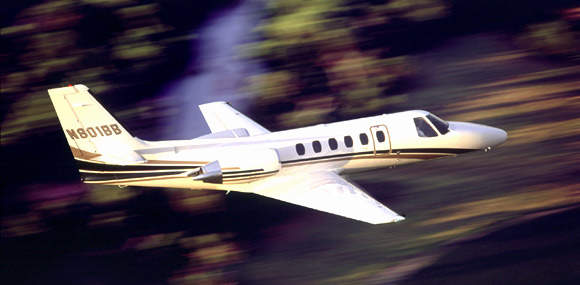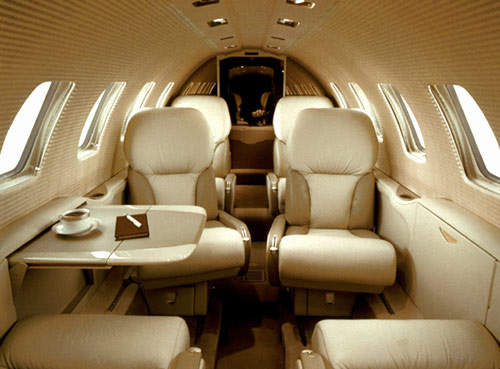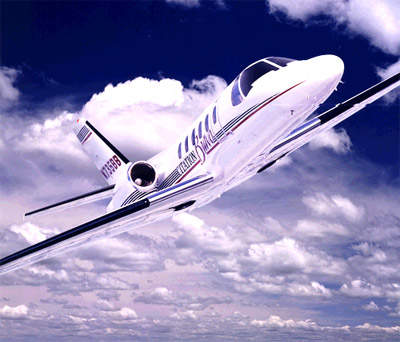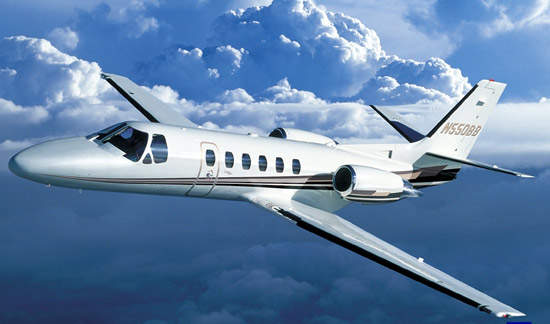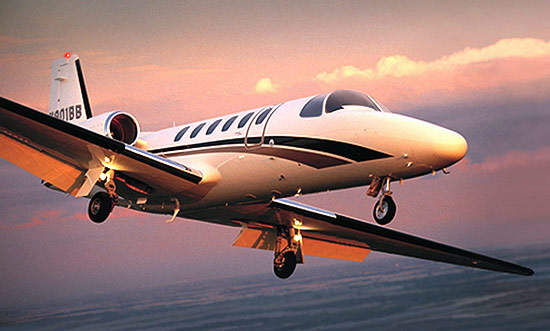The Cessna Citation Bravo light business jet entered service in 1997. The Bravo, a development of the Citation II, flies to an altitude of 13,216m (45,000ft) and carries up to seven passengers. The Citation Bravo aircraft ceased production in September 2006. The aircraft was manufactured at Cessna’s production facilities in Wichita, Kansas. 337 Bravo aircraft were delivered.
Cessna first developed the eight-seat Citation turbofan powered aircraft in 1968 to operate from airfields then being used by light-to-medium twin-engine aircraft. In 1976 Cessna started the expansion of the Citation family with the announcements of
the Citation I and II.
The family of Citation aircraft has continuously expanded and the Bravo is one of nine models of aircraft in the Citation business jet range.
Citation business jets range from the four-passenger Citation Mustang, which flies to an altitude of 12,497m
(41,000ft) to the eight-passenger Citation X, which flies to an altitude of 15,545m (51,000ft). More than 5,000 Citation jets have been delivered.
The aircraft is certified for steep approach capability allowing the aircraft access to steep approach airports such as London City Airport in UK, Lugano Airport in Switzerland and Seyer Airport in Germany.
Four Citation Bravos are in service with the Royal Saudi Air Force. The aircraft aircraft were delivered in 2005/2006 and are stationed at Riyadh Air Base. They replaced two Bombardier Learjet 35 aircraft.
Bravo design
The Bravo aircraft is of similar construction to the Cessna Citation jet with tapered three-spar wings attached to the lower fuselage and the podded Pratt & Whitney engines mounted to the rear fuselage. The T-tail has a tapered tailplane.
Flight deck
The flight deck has two fully adjustable seats. The aircraft is equipped with Honeywell Primus 1000 integrated avionics system, with a Honeywell GNSX flight management system and an electronic flight information system, dual 7in×8in screen primary
flight displays and a 7in×8in multi-function display.
The Honeywell navigation suite includes a VHF omni-directional ranger, distance measuring equipment and digital automatic direction finder, Honeywell VG-14A vertical gyroscopes and a C-14 compass
set.
The aircraft is fitted with a Honeywell Primus 660 colour weather radar. The pilot’s communications system is based on dual Honeywell KY-196 VHF transmitter and receive units.
Cabin
The cabin is heated and air conditioned and pressurised to a pressure differential of 8.8psi using an engine bleed air pressurisation system.
The cabin, which can be fitted to the operator’s specification, has a standard seven-seat layout with four
passengers in club seats facing each other plus three additional club seats. The cabin measures 1.43m in height, 1.48m in width and 4.75m in length without the cockpit.
The nose, cabin and tailcone baggage compartments have a total capacity of 1.54m³.
Engine
The Citation Bravo is powered by two Pratt &Whitney PW530A engines. Each engine delivers 12.84kN (2,287lb) of thrust. The runway performance allows flights to and from airports with runway strips of 1,100m.
Landing gear
The aircraft is fitted with single-wheeled hydraulically-retractable tricycle-type landing gear. The trailing link system in the main landing gear gives smooth landing characteristics.
Performance
The aircraft climbs directly to an altitude of 7,620m at maximum take-off weight in ten minutes and to 13,100m in 32 minutes.
The range with full fuel and a maximum take-off weight is 3,232km. The aircraft achieves a cruise speed of up to 403kt
true airspeed or 745km/h.

